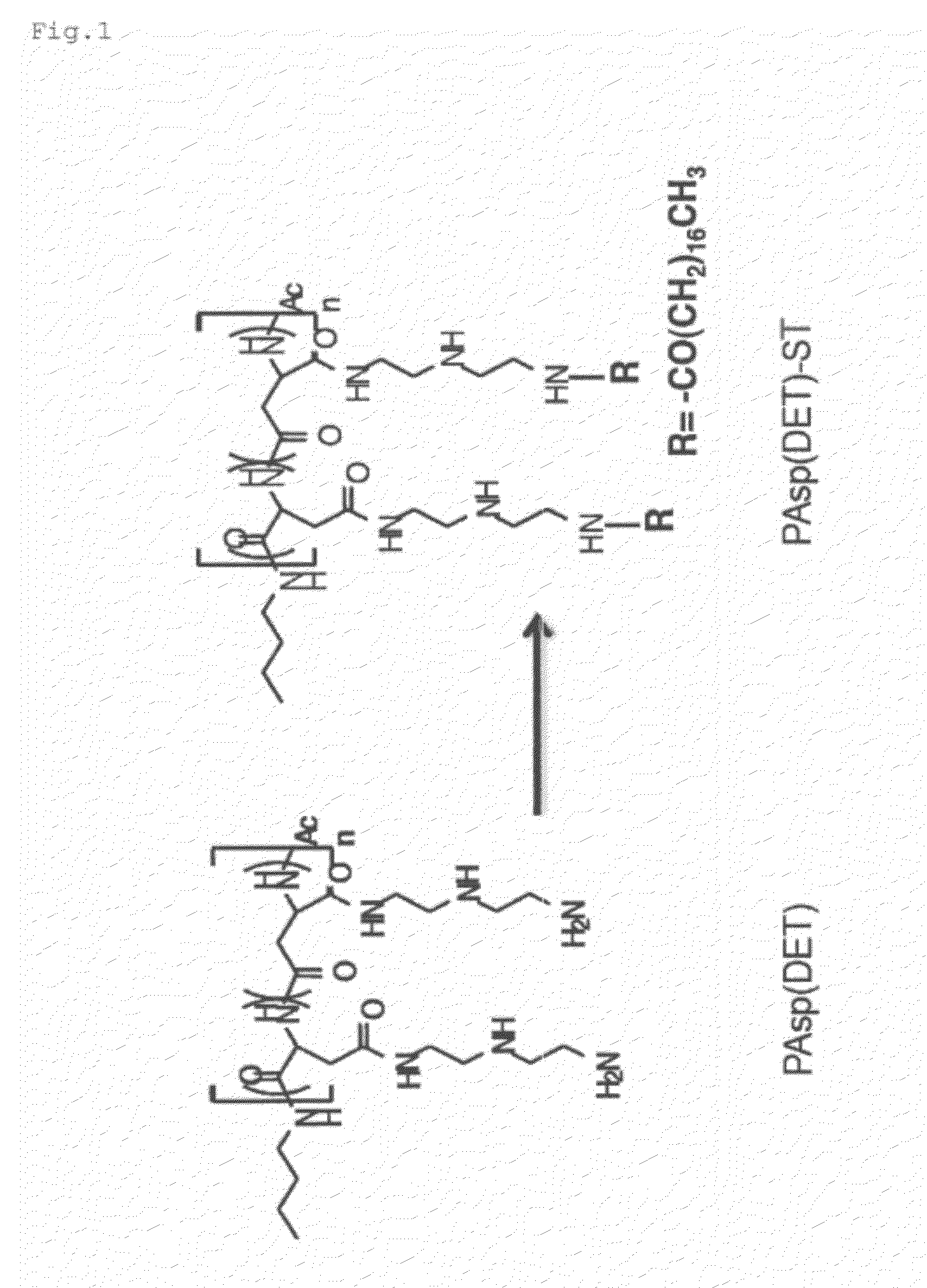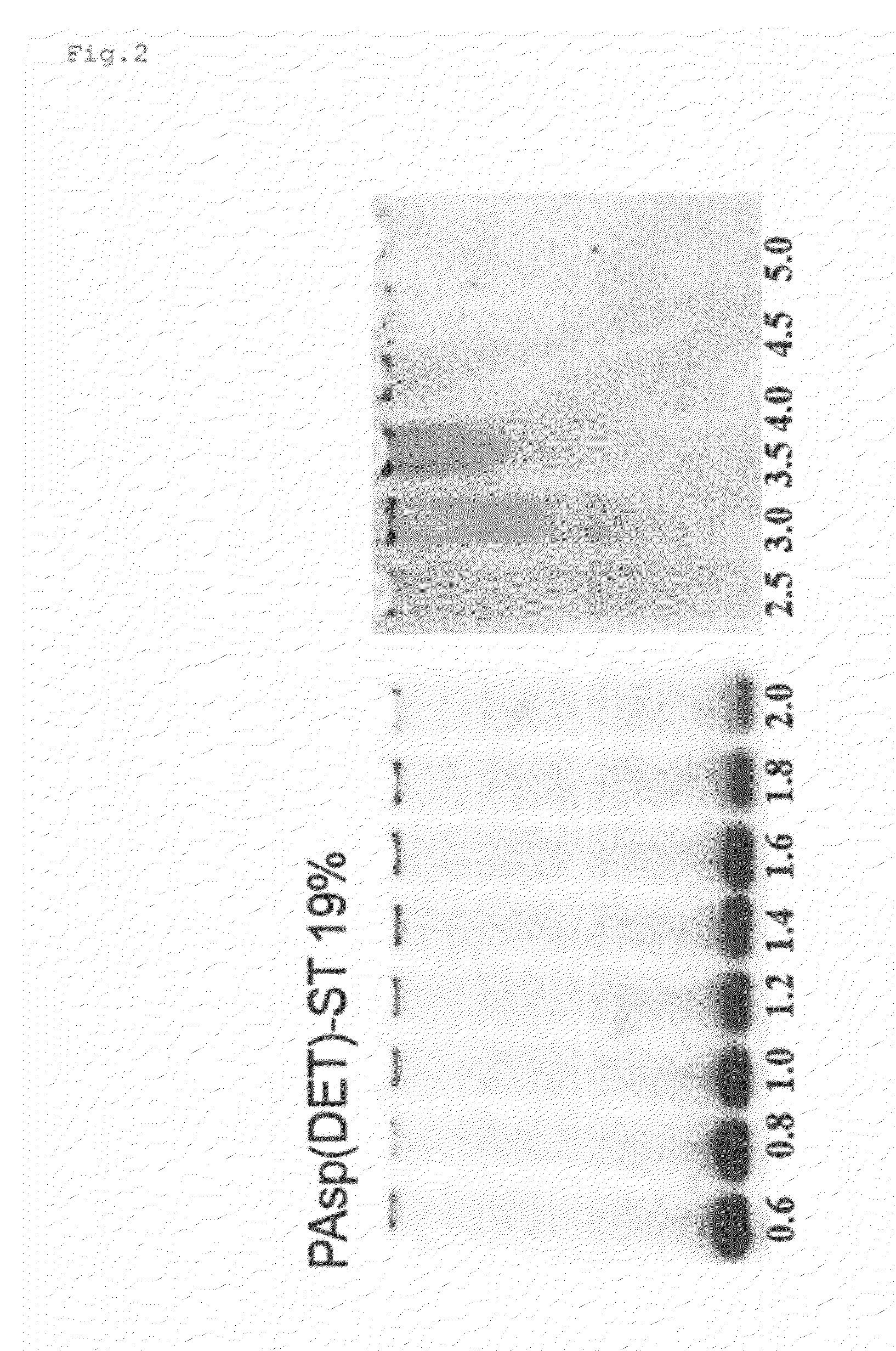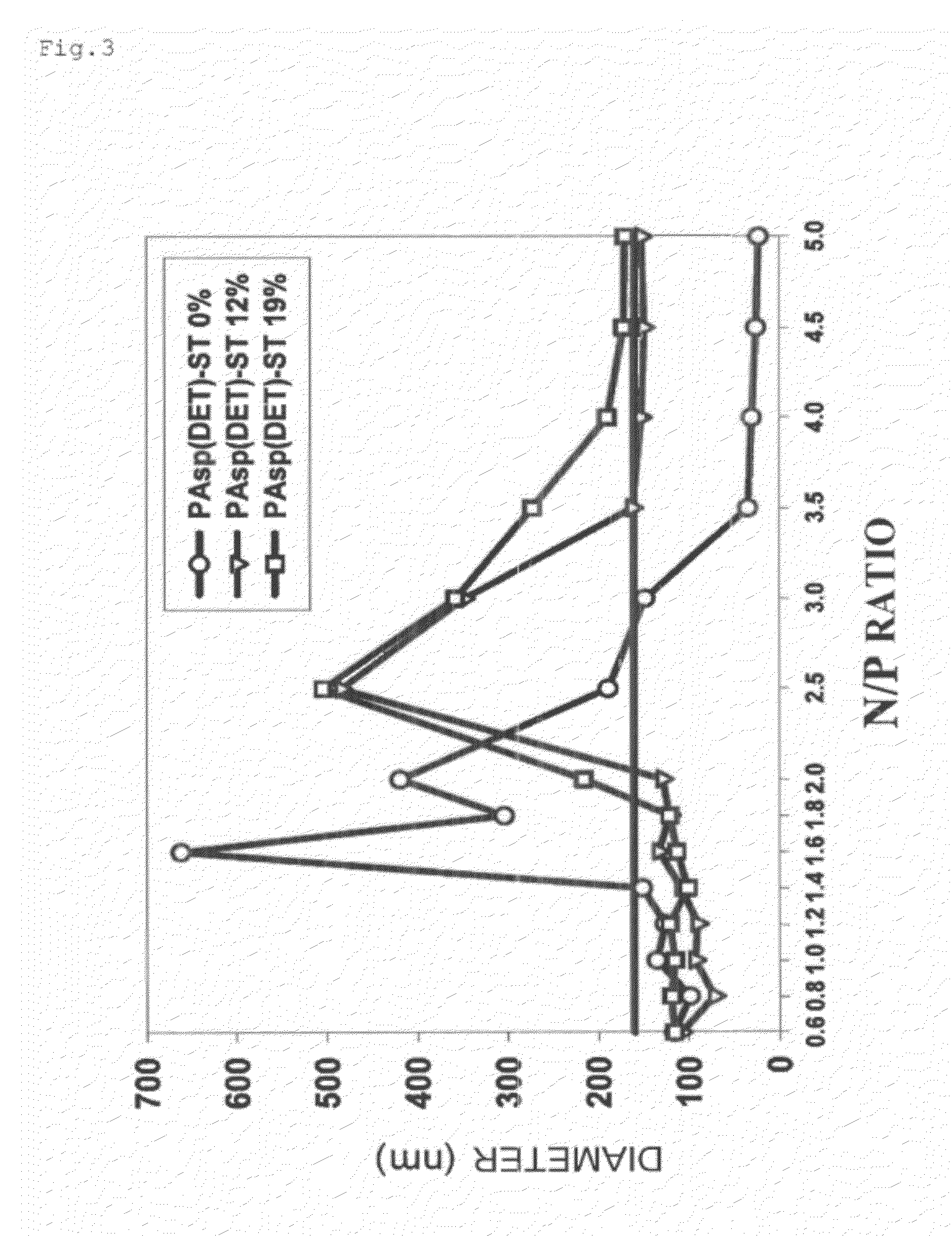Cationic poly (amino acids) and uses thereof
- Summary
- Abstract
- Description
- Claims
- Application Information
AI Technical Summary
Benefits of technology
Problems solved by technology
Method used
Image
Examples
production example 1
Synthesis of N-succinimidyl octadecanoate
[0056]N-Succinimidyl octadecanoate was synthesized in accordance with the following article [N. M. Howarth, W. E. Lindsell, E. Murray, P. N. Preson, Tetrahedron 61 (2005) 8875-8887.]. Stearic acid (1.87 g, 6.56 mmol) and N-hydroxysuccinimide (0.76 g, 6.56 mmol) were dissolved in 80 mL of dichloromethane (DCM) and subjected to a reaction with 1-ethyl-3-(3-dimethylaminopropyl)-carbodiimide hydrochloride (WSC) (1.25 g, 6.56 mmol) for 48 hours. The reaction product was then washed with water, extracted with DCM twice, and dried over MgSO2 to afford a white powder (1.4 g, 56% yield). The conversion rate of a carboxyl group in stearic acid was calculated by 1H-NMR and found to be 96%.
example 1
(1) Synthesis of stearoyl group-introduced PAsp(DET) (PAsp(DET)-ST)
[0057]β-Benzyl-L-aspartate-N-carboxylic anhydride (BLA-NCA) was subjected to cleavage polymerization using n-butylamine as an initiator to synthesize poly(β-benzyl-L-aspartate) (PBLA) (polymerization degree: 110). Next, PBLA (513 mg) was lyophilized from benzene and then dissolved in 25 mL of N-methyl-2-pyrrolidone (NMP). A 50-fold equivalent of diethylenetriamine (DET) with respect to a PBLA side chain was mixed with 13.5 mL of NMP. Then, under argon at 10° C., the DET solution was added to the PBLA solution and the mixture was subjected to a reaction for 1 hour. After that, the resultant was added to a cooled 0.01 N HCl aqueous solution, dialyzed against 0.01 N HCl twice, dialyzed against water at 4° C., and then collected by lyophilization. Confirmation has been made that PAsp(DET) (on the left of FIG. 1) thus synthesized has a high buffer ability while having a cell membrane damaging activity in response to a low...
example 2
(1) Knockdown of Endogenous Gene Bcl-2 with PAsp(DET)-ST / siRNA Complex
[0060]Human pancreatic cancer Panc-1 cells were seeded in a 6-well plate (100,000 cells / well) and were cultured overnight. Then, a complex of siRNA directed against Bcl-2 and each of PAsp(DET) and PAsp(DET)-ST was formed as described above and cultured with the cells for 48 hours (siRNA concentration: 100 nM). After that, the cells were collected by trypsinization and total RNA was collected with an Rneasy Mini kit (Qiagen). Next, cDNA was prepared using a TAKARA PrimeScript RT reagent kit and the mRNA amounts of Bcl-2 and GADPH (housekeeping gene as an internal standard) were evaluated by Real time PCR (ABI7500 Fast Real-Time PCR System (Applied Biosystems, Foster City, Calif., USA)) using a QuantiTect SYBR Green PCR kit (Qiagen). Here, the following sequence was used as the siRNA directed against Bcl-2 (5′-CAG GAC CUC GCC GCU GCA GAC-3′; 3′-CGG UCC UGG AGC GGC GAC GUC UG-5′) (Reference 1). The results revealed t...
PUM
| Property | Measurement | Unit |
|---|---|---|
| Acidity | aaaaa | aaaaa |
| Hydrophobicity | aaaaa | aaaaa |
Abstract
Description
Claims
Application Information
 Login to View More
Login to View More - Generate Ideas
- Intellectual Property
- Life Sciences
- Materials
- Tech Scout
- Unparalleled Data Quality
- Higher Quality Content
- 60% Fewer Hallucinations
Browse by: Latest US Patents, China's latest patents, Technical Efficacy Thesaurus, Application Domain, Technology Topic, Popular Technical Reports.
© 2025 PatSnap. All rights reserved.Legal|Privacy policy|Modern Slavery Act Transparency Statement|Sitemap|About US| Contact US: help@patsnap.com



